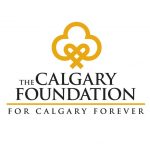“BRING NATURE INTO THE CLASSROOM” $200/class for 90 minute programs
Can’t make it to the Weaselhead for a program? Let us come to you! Our at school programs include hands-on studies and include appropriate games and other activities. Programs last 90 minutes with multiple program options offered per grade to meet new Alberta science and social curricular outcomes. All programs are available year round.
For details on programs offered for kindergarten to grade 9, click on the appropriate grade below. For further information please email education@theweaselhead.com.
Details to book can be found here (Note: the contact phone number in the above video has been changed. Please email education@theweaselhead.com for more information)
(Programs developed with the generous support of The Calgary Foundation)
Calgary Connect
In partnership with ‘Calgary Connect’, a Calgary-wide wildlife monitoring project, the Society is offering 45 minute (younger grades) to one hour at school presentations. These programs explore biodiversity, human impacts on our environment, and the need for co-existence with urban wildlife:
- K – Grade 3: details of presentation and student worksheet
- Grade 4 – Grade 6: details of presentation and student worksheet
- Grade 7 to Grade 9: details of presentation and student worksheet
- for details of how to book: click here
 ________________________________________________________________________________________________
________________________________________________________________________________________________
